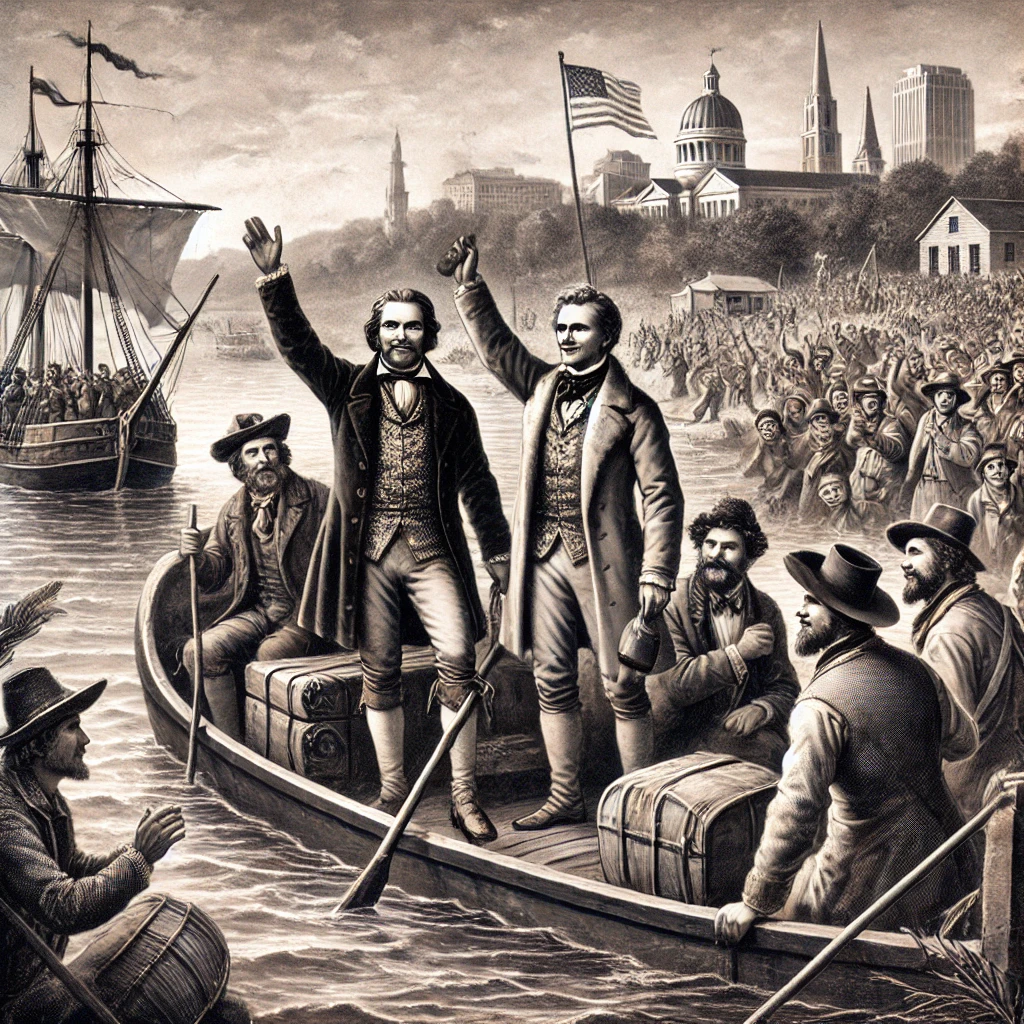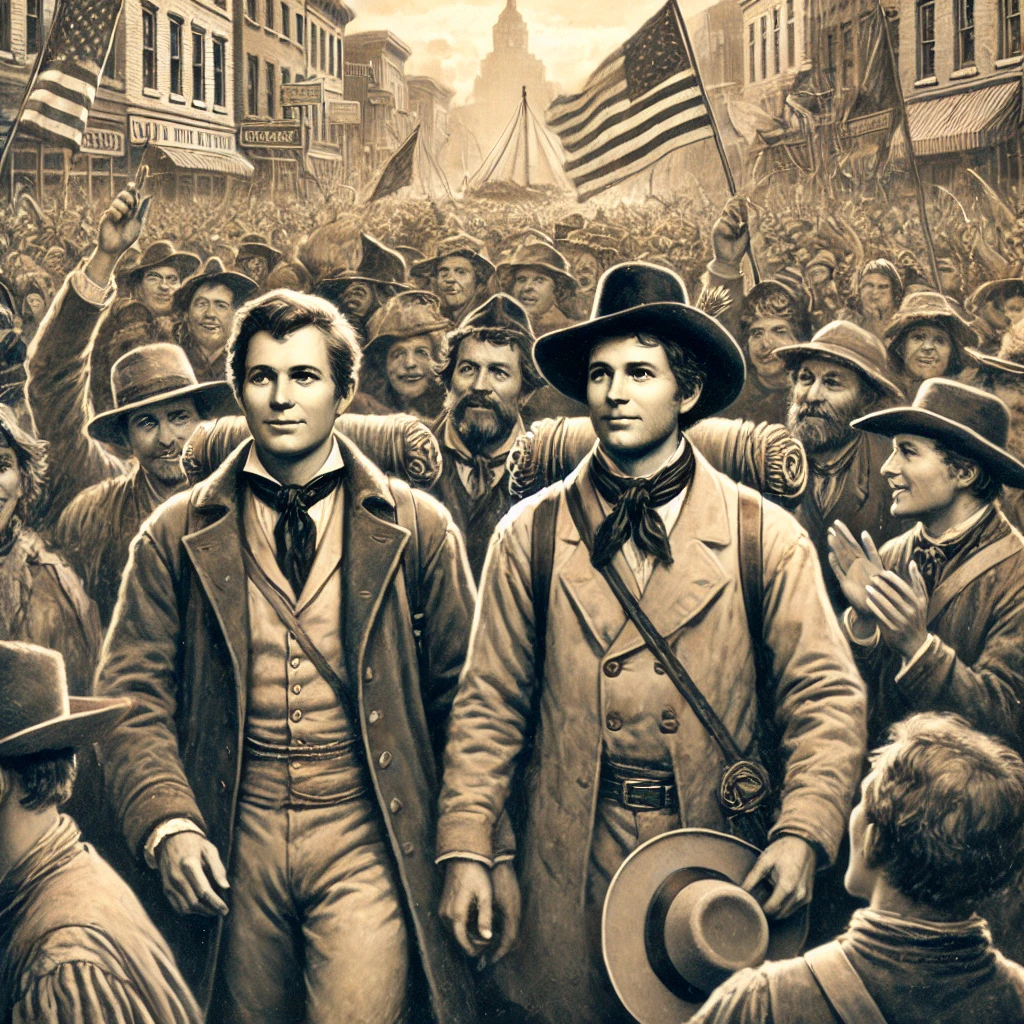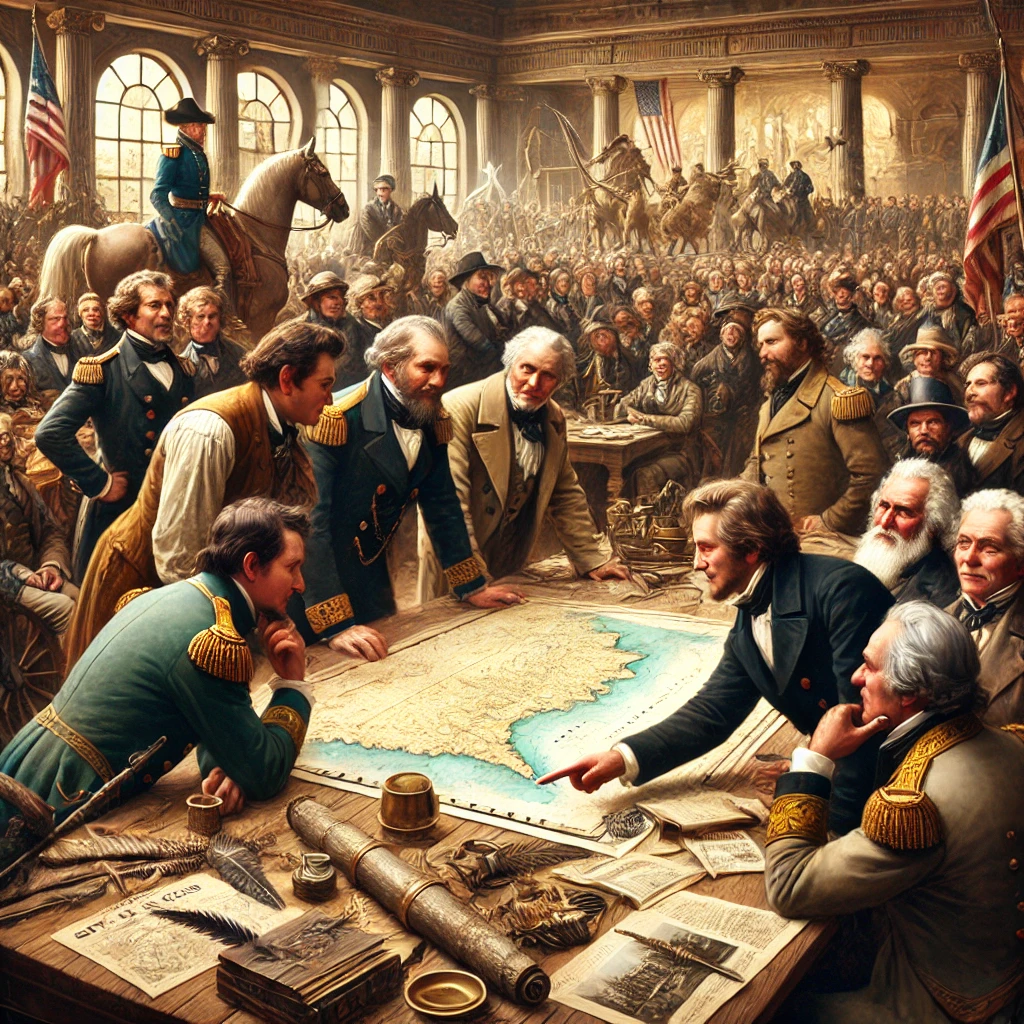A Landmark Expedition Comes Full Circle
On September 23, 1806, Meriwether Lewis and William Clark arrived in St. Louis, Missouri, marking the end of their daring two-year expedition to explore the newly acquired Louisiana Territory and beyond. Commissioned by President Thomas Jefferson in 1804, the Lewis and Clark Expedition had set out to find a practical route to the Pacific Ocean, map the uncharted land, and establish American presence in the region. After 8,000 miles of treacherous travel, the explorers returned as national heroes, having expanded the nation’s knowledge of the vast and mysterious West.

Their arrival back in St. Louis was celebrated, not just as the conclusion of an arduous journey, but as a significant achievement in the young nation’s quest to understand and claim the American frontier. The expedition had opened the door to westward expansion and set the stage for the growth of the United States as a transcontinental power.
Mapping the Uncharted West
The Lewis and Clark Expedition, formally known as the Corps of Discovery, was tasked with exploring the lands of the Louisiana Purchase, a territory that had doubled the size of the United States in 1803. The expedition’s goals were multifaceted: to map the area, study its natural resources, establish trade with Native American tribes, and find a navigable route to the Pacific Ocean. While the team faced numerous hardships, including harsh weather, rugged terrain, and scarce supplies, they achieved remarkable success in mapping the region and documenting its flora and fauna.

Their detailed journals provided invaluable information about the landscape, wildlife, and indigenous cultures of the American West. The maps produced by the expedition were the most comprehensive of the time, shaping the way future settlers and explorers understood the region. Lewis and Clark’s work laid the foundation for the country’s westward expansion and had a lasting impact on the development of the United States.
Diplomatic Encounters with Native Tribes
A crucial aspect of the Lewis and Clark Expedition was its diplomatic mission to establish relations with Native American tribes along their route. The explorers encountered numerous tribes, each with their own customs, languages, and ways of life. While some interactions were tense, many were marked by cooperation and mutual respect. Notably, the Shoshone woman Sacagawea played a critical role as a guide and interpreter, helping the expedition navigate the challenging terrain and broker peaceful exchanges with other tribes. These encounters were pivotal in opening dialogue between Native Americans and the U.S. government, though they also foreshadowed the tensions and conflicts that would arise as American settlers pushed further west in the decades to come. While Lewis and Clark’s diplomacy was seen as successful at the time, it also marked the beginning of a more complicated and often tragic chapter in Native American history.

A Catalyst for Westward Expansion
The successful return of Lewis and Clark in 1806 ignited the imaginations of Americans eager to explore and settle the West. The vast lands they described—rich in resources and potential—drew adventurous settlers, fur trappers, and traders who would follow in their footsteps. The idea of “Manifest Destiny” would later take hold, and Lewis and Clark’s journey became a symbol of the nation’s determination to stretch from coast to coast. The expedition also underscored the importance of science and exploration in the nation’s growth. Thomas Jefferson’s vision for a nation of educated citizens was reflected in the scientific achievements of the Corps of Discovery. The detailed botanical, zoological, and geographic observations made by Lewis and Clark not only contributed to the country’s intellectual heritage but also laid the groundwork for further exploration and discovery.
Enduring Legacy in American History
More than 200 years later, the Lewis and Clark Expedition remains one of the most iconic events in American history. Their journey is celebrated as a defining moment in the nation’s expansion and exploration of the West. Today, monuments, museums, and trails commemorate the expedition’s accomplishments, allowing visitors to retrace their route and understand the magnitude of their achievements. The Lewis and Clark National Historic Trail, spanning from Illinois to the Pacific Ocean, serves as a reminder of the enduring spirit of exploration that defined the early years of the United States. Their legacy lives on in the countless stories of adventure, discovery, and resilience that continue to inspire new generations of Americans.
